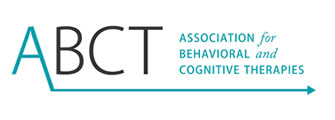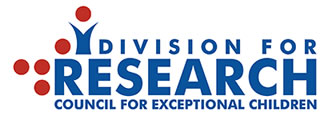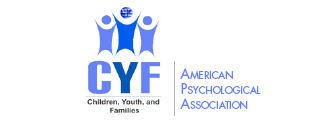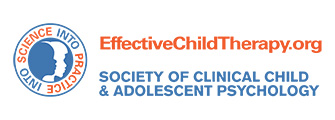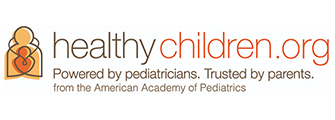
Ryan is 16 years old and a junior in high school in a tight-knit, rural community. He is on the soccer team, has a good sense of humor, is well liked, and maintains good grades. He has been getting college recruitment offers for a soccer scholarship. He is also active in Future Farmers of America (FFA) where he enjoys showing and judging cattle and mentoring younger members. His family is proud of him. They attend his games and support all of his activities. When Ryan attempts suicide, many who know him are shocked and confused. They don’t understand how a kid who seems to have it all could reach the point of suicide. Meanwhile, under the surface, Ryan had been struggling with feelings of worthlessness and depression and started drinking. He has posted messages on Instagram about how things will never get better and has stopped hanging out with most of his close friends. Then he experienced a break up, leading him to believe that those who know him best can never really love him. He felt certain that it would be easier for everyone if he ended his life (despite lots of evidence to the contrary). Even up until his suicide attempt, Ryan made efforts to mask his intense emotional pain so as not to add to the burden of others – telling his parents and friends he was fine when anyone expressed concern.
Fortunately, Ryan survived this suicide attempt…unlike the more than two thousand children and teens who die of suicide in the United States each year. Many people would say that Ryan’s suicide attempt was not preventable. Many people would say that if a young person like Ryan wants to mask their pain enough, they simply can’t be identified and supported. Many people believe that with all that we are hearing in the news about increases in youth suicide, reversing this trend is just not realistic. Fortunately, research and experience suggest that suicide in young people CAN be prevented!
However, we cannot view prevention only in terms of the young person seeking help. Surely emergency medical care, suicide-specific mental health interventions, and restricting youth access to lethal ways to hurt themselves will always be critical aspects of caring for young people at risk for suicide. Yet we cannot wait for high risk kids to overcome possible barriers to access appropriate care. Suicide prevention needs to include whole communities mobilized with creative strategies.
Communities need to learn to act long before the death of a young person with an “upstream” approach to prevention. “Upstream” includes identifying kids at risk earlier, using strategies to reduce risk factors that are associated with suicide attempts, and developing programs that equip trusted adults and peers with tools for supporting youth in crisis. Communities also need to help vulnerable kids live meaningful, value-driven lives. Fortunately, all of these things are attainable! But we first need to increase awareness and support of approaches known to reduce suicides in our communities.
The following are a few of the strategies communities can employ to prevent youth suicide:
- All school staff K-12 should have “gatekeeper” training to identify warning signs of suicide and how to respond to a student showing those signs. Beyond knowledge of such signs, they also should know how to engage a young person, acknowledge their emotional struggle and empower them to engage with other supportive adults. They need to these steps to link a youth with care, AND practice them enough that they can use them in a crisis. Quite simply, talking to a student about thoughts of suicide can be stressful and teachers may avoid it when unprepared. All middle and high schools should have a suicide prevention program in place – which has been shown to reduce suicide attempts, and increase awareness and help-seeking among students (see below).
- We need to create an atmosphere where youth view communicating their distress as welcomed, and self-care is viewed as a sign of strength. We know that youth experiencing thoughts of suicide or who have engaged in suicidal behavior often feel uncomfortable talking about this with adults. Not only are they unsure about living, they may feel burdened with tremendous guilt and shame. These youth may not trust that adults in their life can manage this information without becoming angry, scared, sad, or overwhelmed. What’s more, young people have different comfort levels talking about emotional difficulties in different settings. A parent, teacher, or school counselor may not always be the one a young person turns to in a crisis. This means that we need many adults in the community to be aware of how to respond. Faith-based leaders, coaches, family doctors, police, and camp counselors are but a few of the many adults in the community that can benefit from suicide prevention training.
- A key strategy for suicide prevention is to incorporate universal screening for suicide in primary care settings and schools with a clear plan for following up with those who seem to be at risk, including safety planning. Many healthcare systems are already screening for depression during visits. Use of screening tools have been shown to identify youth at higher risk for suicide without upsetting them more or putting the idea in their mind, as some fear will happen (see below). However, given that youth suicide is the second leading cause of death, it is vital that we expect systems that care for youth to also better identify those who may be at risk for suicide.
- Another critical strategy is to have enhanced “postvention” interventions available to communities after a suicide – because a suicide typically impacts many people. Postvention efforts address the grief of survivors, caregivers, peers and others affected by a suicide. These interventions establish stability and routines in schools or organizations with compassion, reducing the stigma of suicide and helping communities through the recovery process. Importantly, postvention also minimizes the risk of subsequent suicides by other young people who have been affected by identifying and supporting those most at risk for complicated grief, “contagion” (copy-cat behavior), trauma, or “survivor guilt.” Communities often struggle to find the right balance between honoring the person who died of suicide and not “glamorizing” the suicide which may inadvertently increase risk for other young people.
- Young people are a part of their communities, and their thoughts about suicide or attempts – as well as others’ reactions – occur within this community context. We need to have regular community conversations to identify the factors that place our young people at risk and the strengths of the community that will protect them. The question should not be, “Does our community have a problem with suicide?” The question should be, “Because we know a certain number of our young people WILL experience suicidal thoughts and behaviors, what can we do to better identify those at risk, and enhance their safety?”
Resources
Suicide prevention programs:
- National Action Alliance for Suicide Prevention https://theactionalliance.org/our-strategy/national-strategy-suicide-prevention
- Signs of Suicide (SOS)Prevention program https://sprc.org/warning-signs-of-suicide/
- Sources of Strength https://sourcesofstrength.org/
- Youth Aware of Mental Health Programme. http://www.y-a-m.org/
Screening Tools:
Ask Suicide Screening Questions (ASQ; https://www.nimh.nih.gov/research/research-conducted-at-nimh/asq-toolkit-materials/index.shtml
Columbia Suicide Severity Rating Scale (C-SSRS; http://cssrs.columbia.edu/)
PHQ-9 https://patient.info/doctor/patient-health-questionnaire-phq-9
Postvention:
- For Schools http://www.sprc.org/sites/default/files/resource-program/AfteraSuicideToolkitforSchools.pdf
Ackerman, J. (May 29, 2019). The Promise of Preventing Suicides by Mobilizing Communities. Retrieved from https://infoaboutkids.org/blog/the-promise-of-preventing-suicides-by-mobilizing-communities

